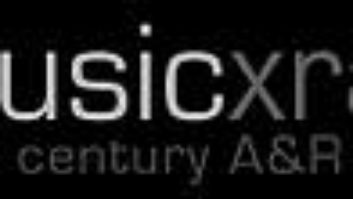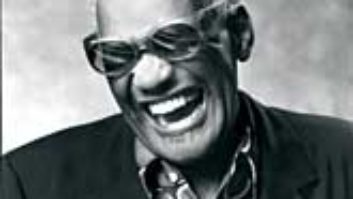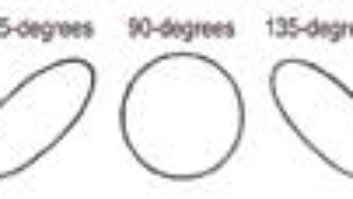
A while back, I was down at Moscone Center (San Francisco) at the Fall IDF (Intel Developer Forum) finishing up a piece on Intel’s HD Audio initiative (“Bitstream,” November 2004). Near the end of the shindig, Dolby Labs announced a follow-on consumer drive that continues its ongoing push to brand every piece of IP it holds dear.
To me, the interesting thing about this announcement is not the initiative itself, but what I see as Dolby’s continuing push to enhance interoperability. By hawking its brands, the company reinforces its power in the CE marketplace, and, in turn, that strengthens its ability to control the ad hoc standards that underlie much of the A/V CE gear that we take for granted. So this month, I’d like to give you a glimpse into Ray’s World and how Dolby’s insistence on quality control is a positive force in the world of audio production and consumption. [Of course, since OMas wrote this, Dolby went public in a very public way. The consumer push was under way long before the announcement. — Eds.]
In the Hindu pantheon of gods and other celestial beings, one entity can have multiple aspects. In the Dolby pantheon of consumer brands, its intellectual property also has multiple aspects — three to be precise: technology-driven feature sets, reliable quality and overarching compatibility. The last two are constants, but, given its long list of intellectual property that has become entrenched in the CE marketplace, Dolby’s consumer marketing folks can reach into the IP basket, grab a handful of tech — including Dolby Digital Plus, MLP, Dolby Surround Pro Logic II, Dolby Virtual Speaker or Dolby Headphone — and bundle them into a new brand that will speak to some segment of the buying public at large.
According to Greg Rodehau, Dolby’s director for PC technology marketing, the company’s emphasis on quality and predictability makes it “possible to have compelling audio capabilities on the PC.” The newly announced branding, PC Entertainment Experience, is designed to be used with the TV-optimized, “10-foot user interface” known as Windows XP Media Center Edition. For the PC Entertainment Experience, Dolby has provided “system-wide access [to Dolby’s technology] for the very first time…through integrated audio on the motherboard.”
Let’s take a look at some of the items in Dolby’s IP basket.
Dolby Digital Plus: At last year’s NAB, Dolby announced this “enhancement of traditional Dolby Digital designed to accompany future video broadcasting formats,” according to a company release. The more scalable Plus reworking of the AC-3 codec is “designed to meet the four major qualifications of a next-generation broadcast audio codec: backward compatibility, spectral efficiency, cost savings and compatibility with future formats.”
Dolby Headphone: Released in 2000, Dolby Headphone is a multichannel-to-binaural convolver. It models a calibrated listening environment that simultaneously affords excellent computational efficiency with fairly convincing phantom imaging of a variety of program material and pinœ shapes — no small feat. In addition to processing multichannel sources, it also handles 2-channel material, running it through, as Rodehau explains, the “Pro Logic II decoder [to] expand stereo content into surround over headphones.”
Dolby Virtual Speaker: Released in 2002, Dolby Virtual Speaker is an über-Schroderizer, a convolver that does for two loudspeakers what Dolby Headphone does for, um, headphones, though not as successfully. Let it be known that this is a devilishly difficult task, which makes it all the more remarkable that the listener can enjoy a somewhat wide range of locations relative to the stereo speakers and still experience a satisfying “surround” soundfield.
THE NEW STUFF
New branding initiatives include the Dolby PC Logo Program. Here’s what Dolby had to say about these packages.
Dolby Sound Room: “Users can enjoy a personal Dolby surround sound experience from the very best seat in the house without a complete 5.1-speaker system. Includes Dolby Digital, Dolby Headphone, Dolby Virtual Speaker and Dolby Pro Logic II technologies.”
Dolby Home Theater: “Enjoy a true 5.1-speaker home theater surround sound experience that places you, your family and friends right in the middle of movie action. Dolby Home Theater immerses you in music and gives you the power to create DVDs with Dolby Digital technology. Includes Dolby Digital, Dolby Headphone, Dolby Virtual Speaker, Dolby Pro Logic II and Dolby Digital Stereo Creator.”
Dolby Master Studio: “The ultimate set of audio presentation capabilities designed to bring your entertainment to life and give you the power to author DVDs with Dolby Digital technology. Amaze family and friends with 7.1 channels of surround sound — for the most natural and engrossing entertainment experiences possible from DVD movies, music, games or broadcast television. Or create your own dramatic presentations and home videos on DVD with true-to-life Dolby Digital audio. Includes Dolby Digital, Dolby Digital Live, Dolby Headphone, Dolby Virtual Speaker, Dolby Pro Logic IIx and Dolby Digital encoding.”
Now let me say that not everything Dolby Labs does is crystalline, flawless and straightforward. Its dealings with the pro audio community with regard to the DVD-Audio format, in my mind, leaves a great deal to be desired in terms of “truth in advertising.” Nonetheless, the company, for the most part, has the best interests in mind of the public and the content producers that feed the distribution channels. This is not altruism; it’s simply good business and engineering practices at work, and here’s where the other two aspects of Dolby come into play: quality and compatibility.
Len Layton, senior VP at PC motherboard audio component vendor C-Media Electronics, told me that Dolby’s role in the CE industry has been very positive. “They act as a last quality-control check” before a product goes out to the marketplace. C-Media has squished Dolby’s AC-3 encoder into a software version, a driver for its onboard “codec” suitable for CE applications. One of those CE brands is Dolby Digital Live, a highly optimized real-time encoder with very low CPU utilization. Another is Dolby Digital 5.1 Creator, another version of its AC-3 encoder, available in low-cost DVD authoring packages suitable for the shelves at Wal-Mart.
Dolby’s PC Entertainment Experience, as with all of its re-branding efforts, will make it easier for consumers to purchase an Intel-based PC that meets their expectations for a multimedia hub.
Granted, modern hardware may be up to the task, but a secure and easy-to-use package is definitely a stretch for the operating system that most PCs are saddled with. “While the Media Center devices resemble somewhat stylish stereo components that could fit easily into a home entertainment system, they still require home networking that’s on the sophisticated side,” opines Jay Greene, Seattle bureau chief for BusinessWeek. Indeed, his understatement illustrates why home A/V installers are salivating at the thought of all that installation and, more importantly, ongoing maintenance revenue.
Dolby’s Rodehau uses the word “credibility” to describe one of the qualities that its initiative confers on PC manufacturers, and, in the crowded world of consumer electronics, that credibility is as good as gold. I can’t help but think that all this flurry of marketing activity may have something to do with Dolby’s recently announced IPO. Nonetheless, the commoditization of advanced audio processing and easy-to-use delivery of that power to consumer desktops will have a significant impact on our industry’s long-term services mix, so plan for it and don’t cry if you get caught off-guard.
OMas promises to finish his ongoing “geek speak” dictionary next month. Really.
BAG OF TRICKS
For your inspection, here’s an item from Waves’ consumer division: If you’ve had any seat time with Waves’ Renaissance suite, then you’ve probably listened to Ren Bass, its second-generation MaxxBass plug-in. Those same psychoacoustic subharmonic synthesis smarts appear in a range of well-received CE offerings from Altec Lansing, Microsoft, Samsung, Sanyo and Sony. Last year, the folks at Waves were nice enough to send me one of them. Its Home MiniWoofer is a 7-inch cube (think Auratone) that weighs less than six pounds. This mains-powered widget is designed for bass-anemic playback systems such as TVs, tabletop entertainment systems and computers.
From the sound of it, MaxxBass’ juju is a good bit more advanced than the original Model 100 from dbx that I worked on as a callow youth. If I recall correctly, that beast used a surprisingly simple analog/digital hybrid circuit to provide rough-and-tumble low end suitable for the disco dreck — the musical hallmark of the era. Hey, in those days, we all got away with lots of things — like polyester shirts and el cheapo subharmonic synths — that we wouldn’t be caught dead in today.
Anyway, the woofer includes the now-standard signal sensing, “auto” power switch, “phase” reversal switch and power receptacle connector for the soap-on-a-rope power supply, all on the back. It also has gain and synthesis knobs that, if set carefully, provide satisfying bottom while naturally filling in the hole between the lowest octave of my generic computer speakers, Yamaha YST-M101s, and the onset of overt woofing. In fact, the MaxxBass algorithm provides an octave or more of perceived extension, while keeping dissipated power requirements and speaker box volumes low.
— OMas





